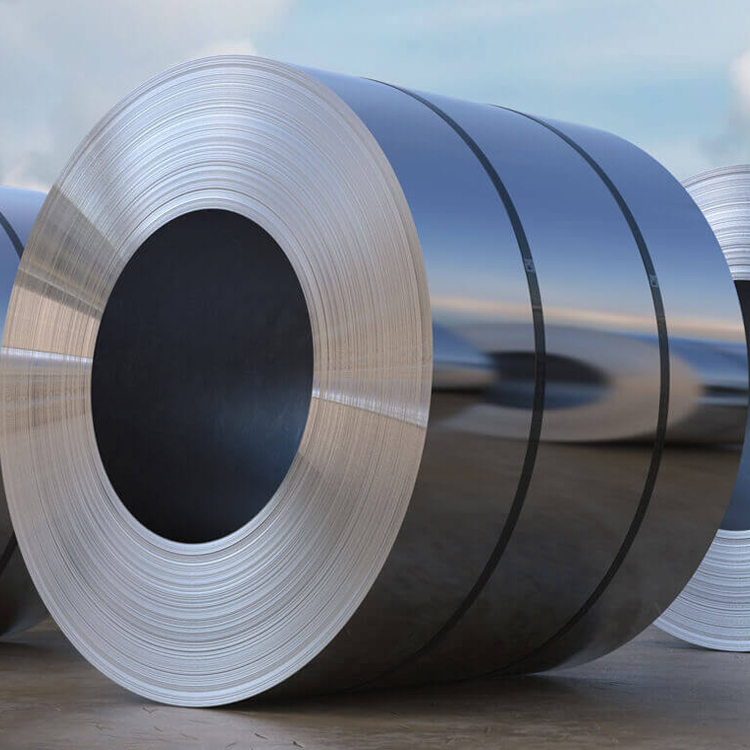The corrosion resistance of iron-chromium alloys was first recognised in 1821 by French metallurgist Pierre Berthier, however the high-chromium alloys produced by 19th century metallurgists were too brittle to be practical. In 1872, John Woods and John Clark patented a “Water Resistant” alloy in Britain, that would today be considered a stainless steel.
To be identified as stainless steel, the alloy must contain at least 10.5% chromium. Stainless steel grades are most notable for their corrosion resistance, which increases with increasing chromium content. Addition of molybdenum increases corrosion resistance in reducing acids and against pitting attack in chloride solutions. A twenty-year atmospheric corrosion testing study from a corrosive coastal environment in South Africa showed that Grade 316 stainless steel had up to 9,000 times the life of carbon steel.
Modern stainless steels fall into a number of different families, each with numerous grades and a wide range of properties. With an enormous variety of stainless steel, it is a specialist task to match the most appropriate product to its specific application.
There are four main families of stainless steel:
Austenitic stainless steel
Austenitic stainless steel is the largest family of stainless steel, making up about two-thirds of all stainless-steel production. Their microstructure is achieved by alloying with nickel and/or manganese and nitrogen. Austenitic stainless steels are not hardenable by heat treatment since they possess the same microstructure at all temperatures.
They are characterised by low yield strength (200 to 300MPa) which limits their use for structural and other load bearing components. Their elongation is high which makes them particularly suited to fabrication applications such as kitchen sinks, and they are weldable by all processes. They are essentially non-magnetic and maintain their ductility at cryogenic temperatures.
They are subdivided into two sub-groups, the 200 series and the 300 series:
- 200 Series are chromium-manganese-nickel alloys, which maximise the use of manganese and nitrogen to minimise the use of nickel. Due to their nitrogen addition they possess approximately 50% higher yield strength than 300 series stainless steels. Type 201 is hardenable through cold working; Type 202 is a general-purpose stainless steel. Decreasing nickel content and increasing manganese results in weak corrosion resistance.
- 300 Series are chromium-nickel alloys which achieve their austenitic microstructure almost exclusively by nickel alloying; some very highly alloyed grades include nitrogen to reduce nickel requirements. The 300 series is the largest group and the most widely used, and the best-known grade is Type 304 with 18% chromium and 8-10% nickel. The second most common is Type 316 which contains 2% molybdenum for greater resistance to acids and to localised corrosion caused by chloride ions.
Ferritic stainless steel
Ferritic stainless steels possess a ferrite microstructure, like carbon steel, and contain between 10.5% and 27% chromium with very little or no nickel. This microstructure is present at all temperatures due to the chromium addition, and like austenitic stainless steels, these are not hardenable by heat treatment. They cannot be strengthened by cold work to the same degree as austenitic stainless steels. They are magnetic like carbon steel.
As they do not contain nickel, they cost less than austenitic grades and are now present in a wide range of industries.
Common grades are 409 with about 10.5% chromium and used mostly for automobile exhaust pipes in North America, 430 (17% chromium) for architectural applications, and for kitchenware, sinks, slate hooks, roofing, etc.). Additions of niobium, titanium and zirconium to grade 430 allow a good weldability and such grades are used for automotive exhaust pipes and white goods.
Martensitic stainless steels
Martensitic stainless steels form a family of stainless steels that can be heat treated to offer a wide range of properties for mechanical and allied engineering applications, stainless tools and creep resisting steels. They fall into 4 categories (with some overlap):
- Iron-chromium-carbon: the first grades used and they are still widely used in engineering and wear-resistant applications.
- Iron-chromium-nickel-carbon grades: In these grades, some of the carbon is replaced by nickel. They offer a higher toughness and a higher corrosion resistance. Grade EN 1.4303 with 13% chromium and 4% nickel is used for turbines on hydroelectric power plants because it has good casting properties, a good weldability and a good resistance to cavitation erosion.
- Precipitation hardening grades: Grade EN 1.4542 is the best-known grade and combines martensitic hardening and precipitation hardening. These achieve high strength and good toughness and are used in aerospace among other applications.
- Creep-resisting grades: Small additions of niobium, vanadium, boron and cobalt increase strength and creep resistance up to about 650 °C.
Duplex stainless steels
 Duplex stainless steels have a mixed microstructure of austenite and ferrite, the aim usually being to produce a 50/50 mix, although in commercial alloys the ratio may be 40/60. They are characterised by high chromium (19–32%) and molybdenum (up to 5%) and lower nickel contents than austenitic stainless steels.
Duplex stainless steels have a mixed microstructure of austenite and ferrite, the aim usually being to produce a 50/50 mix, although in commercial alloys the ratio may be 40/60. They are characterised by high chromium (19–32%) and molybdenum (up to 5%) and lower nickel contents than austenitic stainless steels.
The properties of duplex stainless steels are achieved with an overall lower alloy content than similar-performing super-austenitic grades, making their use cost-effective for many applications.
Duplex stainless steels have roughly twice the yield strength of austenitic stainless steels. Their mixed microstructure provides improved resistance to chloride stress corrosion cracking in comparison to austenitic Types 304 and 316 stainless steels.
Duplex grades are usually divided into three sub-groups based on their corrosion resistance: lean duplex, standard duplex and super duplex.
The pulp and paper industry was one of the first to use extensively duplex stainless steel. Today, the oil and gas industry is the largest user and has pushed for more corrosion resistant grades, leading to the development of super duplex and even so-called hyper duplex grades.
More recently, the less expensive (and slightly less corrosion-resistant) lean duplex has been developed, chiefly for structural applications in building and construction (concrete reinforcing bars, plates for bridges, coastal works) and for the water industry.
150 grades of stainless steel
There are over 150 different grades of stainless steel that are manufactured globally, of which 15 are most commonly used. Austenitic steel dominates production with 300 series steels accounting for 54% and 200 series accounting for 21% of global production respectively. Ferritic and martensitic stainless steels (also called 400 series) accounts for a further 23% of production.
With so many different varieties of stainless steel, you need expert advice to match the best product to your application. Talk to our expert team or email sales@agengineering.com.au with your inquiry. We look forward to hearing from you.




